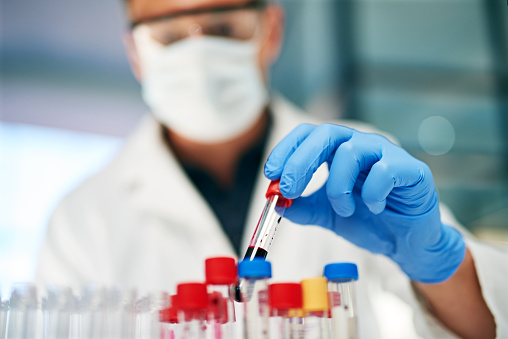Platelet Rich Fibrin
 Platelet-rich fibrin (PRF) is a biological product derived from the patient's own blood, enriched with platelets, leukocytes, and growth factors. It is widely used in various medical and dental procedures due to its regenerative properties. PRF is produced by centrifuging a small sample of the patient's blood to concentrate platelets and fibrin, forming a gel-like substance. This process allows for the extraction of a natural and autologous material that promotes tissue healing and regeneration. Platelet-rich fibrin (PRF) is a biological product derived from the patient's own blood, enriched with platelets, leukocytes, and growth factors. It is widely used in various medical and dental procedures due to its regenerative properties. PRF is produced by centrifuging a small sample of the patient's blood to concentrate platelets and fibrin, forming a gel-like substance. This process allows for the extraction of a natural and autologous material that promotes tissue healing and regeneration.In dentistry, PRF is commonly used in procedures such as dental implants, bone grafting, and periodontal surgery to enhance wound healing, reduce inflammation, and promote tissue regeneration. The growth factors released from platelets within PRF stimulate angiogenesis, collagen synthesis, and cell proliferation, accelerating the healing process and improving treatment outcomes. PRF offers several advantages, including biocompatibility, safety, and ease of preparation, making it a valuable adjunct in various dental procedures aimed at restoring oral health and function. When seeking a PRF procedure, it is essential to opt for quality dental services, such as those offered by Myers Park Dental Partners. What is Platelet-Rich Fibrin (PRF)?Platelet-Rich Fibrin is a natural substance derived from the patient's blood, enriched with platelets, leukocytes, and growth factors. It accelerates tissue healing, reduces inflammation, and stimulates regeneration in dentistry and medicine. PRF's autologous nature and simplicity of preparation make it a valuable adjunct in various clinical procedures. PRF Preparation Techniques: How is it Made?Platelet-Rich Fibrin preparation involves a series of steps to extract and concentrate platelets, leukocytes, and growth factors from the patient's blood. The process begins with the collection of a small blood sample, typically taken from the patient's arm using a sterile syringe. The blood is then transferred to specialized tubes designed for PRF preparation. Once collected, the blood tubes are immediately centrifuged to separate their components based on density. This centrifugation process involves spinning the tubes at a specific speed and duration, causing the heavier components, such as red blood cells, to settle at the bottom while the lighter components, including platelets and leukocytes, concentrate towards the top. After centrifugation, the tubes are carefully removed from the centrifuge, and the layers of blood components are visually inspected. The middle layer, known as the buffy coat, contains the concentrated platelets, leukocytes, and fibrin matrix, which form the PRF. The PRF clot is then extracted from the tubes using sterile instruments and processed further, depending on the intended application. In some cases, the PRF may be compressed or flattened to form membranes or plugs for surgical placement. Alternatively, the PRF may be left in its natural clot form for direct application to the treatment site. Throughout the entire preparation process, strict adherence to sterile techniques and protocols is crucial to minimize the risk of contamination and ensure the safety and effectiveness of the PRF product. Once prepared, the PRF can be used immediately or stored for future use, providing a valuable resource for promoting tissue healing and regeneration in various dental and medical procedures. Benefits of Platelet-Rich Fibrin (PRF) TherapyPlatelet-rich fibrin therapy offers a multitude of benefits across various medical and dental fields due to its regenerative properties and biological composition. One primary advantage of PRF is its ability to promote tissue healing and regeneration. The concentrated platelets within PRF release growth factors such as platelet-derived growth factor (PDGF), transforming growth factor-beta (TGF-β), and vascular endothelial growth factor (VEGF), which stimulate cell proliferation, angiogenesis, and collagen synthesis. PRF therapy has been widely utilized in dentistry for procedures such as dental implants, bone grafting, and periodontal surgery. It enhances wound healing, reduces inflammation, and accelerates bone and soft tissue regeneration, leading to improved treatment outcomes and reduced post-operative complications. In medicine, PRF therapy has shown promise in various applications, including orthopedic surgery, plastic and reconstructive surgery, and wound healing. It has been used to facilitate tissue repair in chronic wounds, accelerate healing in sports injuries, and enhance outcomes in joint surgery. One significant advantage of PRF therapy is its autologous nature, meaning it is derived from the patient's own blood, reducing the risk of immunological reactions or disease transmission. PRF is simple to prepare, cost-effective, and minimally invasive, making it an attractive treatment option for both patients and healthcare providers. PRF therapy can also potentially reduce the need for synthetic or foreign materials in regenerative procedures, providing a natural and biocompatible alternative. Its ability to harness the body's own healing mechanisms makes it an invaluable tool in promoting tissue regeneration and improving patient outcomes across various medical and dental specialties. Applications of PRF in DentistryPlatelet-Rich Fibrin has revolutionized various dental procedures due to its regenerative properties. In dentistry, PRF finds extensive applications in procedures such as dental implants, bone grafting, and periodontal surgery. During dental implant placement, PRF enhances osseointegration by accelerating bone regeneration around the implant site, leading to improved stability and success rates. In bone grafting procedures, it promotes bone formation and enhances graft integration, facilitating the repair of bone defects and deficiencies. PRF is also utilized in periodontal surgery to stimulate soft tissue regeneration and reduce post-operative complications. Its ability to accelerate wound healing, reduce inflammation, and promote tissue regeneration makes it an invaluable adjunct in various dental treatments, contributing to improved treatment outcomes and patient satisfaction. PRF vs. Other Platelet Concentrates: What Sets it Apart?PRF stands out from other platelet concentrates due to its unique biological composition and preparation method. Unlike other platelet concentrates, such as Platelet-Rich Plasma (PRP), PRF does not require anticoagulants or additives during preparation, making it entirely autologous and free from exogenous substances. PRF also contains a higher concentration of platelets and leukocytes, along with a fibrin matrix, which enhances its regenerative properties and promotes tissue healing. The fibrin matrix within PRF serves as a scaffold for cell migration and proliferation, facilitating tissue regeneration and wound healing. Also, PRF's simplified preparation technique and lower cost make it a practical and accessible option for clinicians, allowing for easier integration into clinical practice. Book Your Dental Appointment TodayIf you're seeking a comprehensive dental examination or specific dental services by a professional dentist, you can reach out to Myers Park Dental Partners for your queries and appointments. You can also contact the office directly at (704) 332-2532. |
 |